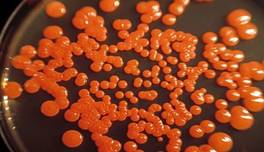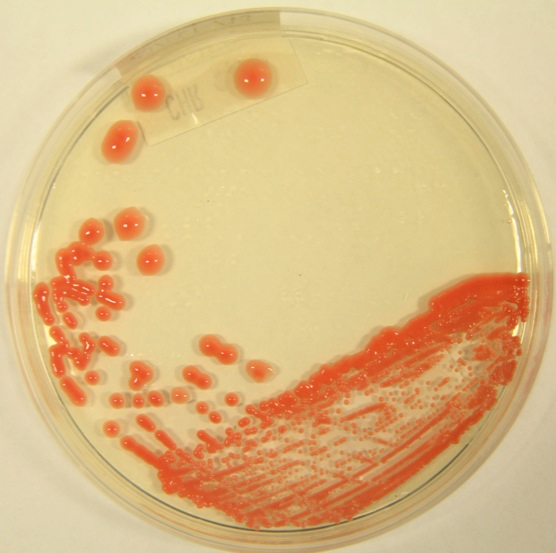Rhodotorula is a pigment-producing yeast that occasionally causes serious infections in the bloodstream, CNS or eyes of immunosuppressed patients (HIV/haematology) who are receiving invasive hospital treatment, such as peritoneal dialysis or a CVC.
For a recent systematic review please see Ioannou et al (2018) or visit Doctor Fungus for further information about the culture characteristics and susceptibility data of R. mucilaginosa and R. minuta

Factsheet
| NAMES Rhodotorula mucilaginosa (previously Rhodotorula rubra) |
| NATURAL HABITAT Terrestrial and aquatic, including marine habitats. Frequently isolated from human beings. Also found in pillows. |
| GEOGRAPHY Worldwide |
| DISEASES Fungaemia, sepsis, endophthalmitis, catheter infections, peritonitis, meningitis mainly in immunocompromised patients. Produces several allergens and potentially involved in allergic disease. |
| PREVALENCE Unknown but in general terms is an infrequent agent of fungal infections in humans. |
| CULTURE Colonies growing in culture media are pink to coral red, glistening or dull, mucous, smooth or rough. Microscopy – budding cells. In some cases, rudimentary pseudomycelium can be observed. Biosafety level 1 |
| ANTIFUNGAL RESISTANCE Amphotericin B and flucytosine are the most active agents against R. mucilaginosa. All strains are resistant to fluconazole. Cross resistance to other azole drugs is not the rule but more than 60% of the strains show resistance to itraconazole, voriconazole and posaconazole. Echinocandins are inactive against this yeast species. |
| INDUSTRIAL USES Carotenoid production for the food industry |


Colony appearance of R. mucilaginosa 
R. mucilaginosa on CHROMagar 
Right: R. mucilaginosa turns pink on urease test. Left: negative control

